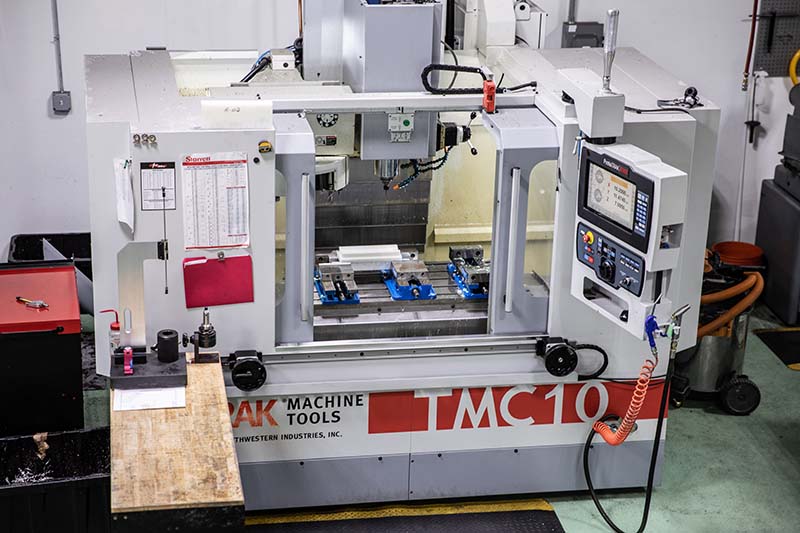Joining Technologies | 10/25/2024 | 5 Min Read:
CNC machining, short for Computer Numerical Control machining, is one of the most transformative technologies in modern manufacturing. From aerospace components to custom jewelry, these machines play a vital role in producing precise and complex parts that would be difficult or impossible to make by hand. Whether you’re a manufacturing enthusiast, an engineer, or simply curious about technology, this post will give you a clear understanding of CNC machining, its key benefits, applications, and why it’s become an industry game-changer.
What is it exactly?
At its core, CNC machining is a manufacturing process where pre-programmed computer software dictates the movement of factory tools and machinery. CNC machines can be used to control a wide range of complex machinery, from grinders and lathes to mills and routers. These machines shape, cut, and drill materials with extreme precision based on the instructions of a CAD (computer-aided design) file.
Unlike traditional machining, where a skilled operator manually controls the tool, CNC machining automates the process. Once a part’s design is created and the program is loaded, the CNC machine takes over, guiding the tool to cut and shape the material with incredible accuracy.
So How Does It All Work?
CNC machining starts with the design phase, where engineers or designers create a digital model of the part or component using CAD software. This design is then converted into G-code, a programming language that CNC machines understand. G-code controls the speed, position, and path of the tools.
The material is secured onto the machine bed or fixture, and the tool (cutting, drilling, or milling) follows the G-code instructions to remove or add material as needed. The machine performs precise, repetitive operations, ensuring uniformity in production while drastically reducing human error.
Types of CNC Machines
CNC machining includes various types of machines, each specialized for different tasks. Here are the most common types:
CNC Milling Machines – These machines use rotating cutting tools to remove material from a workpiece. They can move along multiple axes (up to five or more) to create complex geometries.
CNC Lathes – In a CNC lathe, the workpiece rotates while a cutting tool removes material. This is ideal for creating cylindrical or symmetrical objects, such as shafts and gears.
CNC Routers – These machines are typically used for cutting softer materials like wood, plastic, or foam. CNC routers are widely used in woodworking and sign-making industries.
CNC Plasma Cutters – Plasma cutters use a plasma torch to cut through metals like steel, aluminum, or brass. These machines are known for cutting thick materials quickly.
CNC Electric Discharge Machines (EDM) – EDM machines use electrical discharges or sparks to remove material, primarily in hard metals that are difficult to machine with traditional methods.
Benefits of CNC Machining
CNC machining offers several advantages over manual machining or other traditional methods. Here’s why it’s so widely adopted:
High Precision – They follow programmed instructions with extreme accuracy, often achieving tolerances as small as a few microns. This level of precision is critical in industries like aerospace, medical devices, and automotive manufacturing.
Repeatability – Once a design is programmed, they can produce identical parts in large quantities with little to no variation. This makes it ideal for mass production.
Efficiency – They reduce the time required to produce complex parts. Since the machines can run 24/7 with minimal supervision, they significantly boost productivity.
Complex Geometries – Capabilities to create intricate and complex shapes that would be difficult to achieve through manual processes. Multi-axis CNC machines, in particular, can work on multiple faces of a part simultaneously.
Material Versatility – CNC machining works with a wide range of materials, including metals (aluminum, steel, titanium), plastics, wood, and foam. This flexibility makes it suitable for many industries.
Reduced Human Error – Since CNC machines are automated, there is less room for mistakes compared to manual operations. Human oversight is still needed for setup and maintenance, but the actual machining is highly reliable.
Scalability- Whether you need a single prototype or thousands of identical parts, CNC machining can easily scale to meet production needs.
Common Applications of CNC Machining
CNC machining is used across a variety of industries for its precision and adaptability. Some common applications include:
Aerospace – Precision components for engines, landing gear, and turbine blades are made using these machines due to their stringent tolerance requirements and complex designs.
Automotive – Produce parts such as gears, engine components, and custom modifications, where precision and performance are critical.
Medical Devices – Used to create surgical instruments, implants, and other medical devices that require exact dimensions and biocompatibility.
Electronics – It produces housings, enclosures, and other precise components for consumer electronics.
Prototyping – Designers and engineers rely on this for rapid prototyping, allowing them to test and iterate designs quickly.
Jewelry – Fine details and intricate designs required in jewelry making are easily achieved, offering both speed and accuracy.
Request a Quote Today!
At Joining Technologies, you can take advantage of our precision machining service as a standalone offering or in conjunction with our precision welding and build-to-print services. Click here to request a quote now.

Have Some Questions?
Let us answer them by clicking the button below!